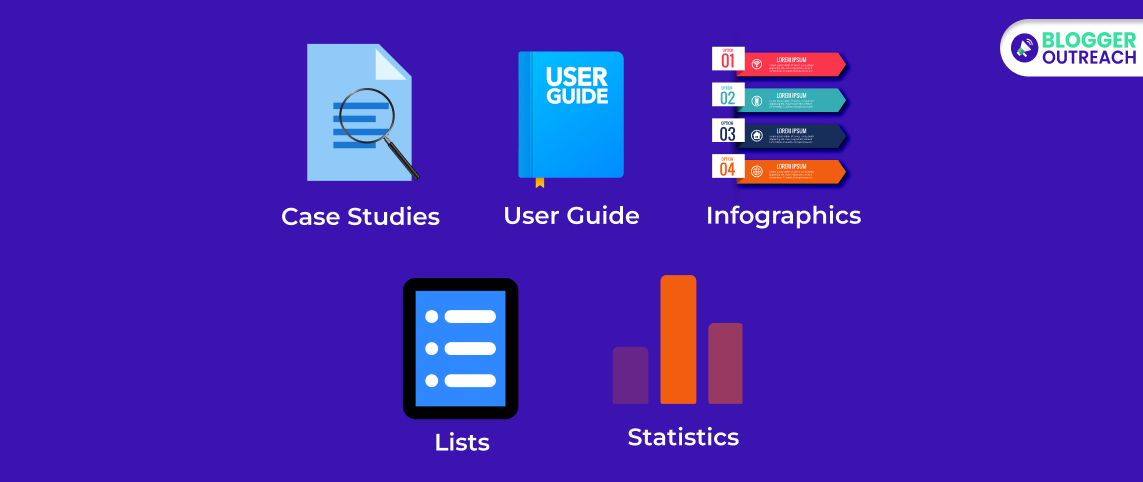Table Of Contents
What are Linkable Assets?
Why You Should Care About Linkable Assets
Main Types of Linkable Assets
Best Practices
Conclusion
Link building is an effective strategy that aims to boost your online visibility and improve search engine rankings. With the changes in the digital landscape, link-building techniques have also transformed. They are now shifting towards creating high-quality and high-performing contents that attract backlinks organically.
This strategy closely aligns with the SERP algorithms that prioritize quality content and ensure the links are authoritative and genuine. Read on to know more about creating quality linkable assets to get you the authoritative links.
Table Of Content
What Are Linkable Assets?

Linkable assets are high-quality, useful information designed to generate backlinks from other websites naturally. They serve as a resource that other site owners find valuable or interesting enough to share with their audience, earning you a backlink.
Infographics, long blog entries, case studies, white papers, original research, and more are linkable assets.
Why You Should Care About Linkable Assets
Your main goal as a business is to boost your SEO and rise in the search engine results page (SERP) ladder. Building robust and effective linkable assets is essential to drawing backlinks and eventually accomplishing your goal.
Here’s how this form of content may assist you in achieving multiple goals:
(i) Boost Your SERP Position
Reputable websites’ backlinks indicate that your content is authoritative and relevant to search engines. Therefore, having substantial content assets can help you rank higher in search results by automatically attracting links from such sites.
(ii) See A Rise In Website Traffic
The best thing about linkable assets is that they may increase organic traffic since other websites direct their visitors to your website when they link to your excellent content.
(iii) Make Your Website Appear Authoritative
In addition to increasing your website’s search engine exposure, content assets may strengthen your brand’s authority and trustworthiness.
Therefore, creating linkable content is unquestionably a potent link-building strategy. The trick is to identify the kinds of content that are more likely to be linked to and then focus your efforts on creating them.
Main Types Of Linkable Assets
Here are some of the main types of linkable assets that you can leverage to boost your SEO:
(i) Blogs
An insightful and thoroughly researched blog article can make a potent linkable resource. These should discuss market trends, provide suggestions, or solve common issues.
For example, you may establish your blog as a reliable source by writing a thorough guide on cutting-edge technology or a data-driven analysis of industry trends.
Because they may thoroughly cover complicated topics in an easily consumable style, blog articles are among the most popular linkable materials.
You may conduct a consumer survey and write a blog article using the raw information. The more consumable the material, the more likely it will be linked to since it is simple to grasp.
(ii) Infographics
Infographics present data in an aesthetically pleasing and readily distributable manner. An infographic that displays a systematic approach or graphically simplifies difficult information can be a valuable resource for other websites trying to improve their content.
Information presented in an easy-to-read manner is more naturally more shareable across different digital platforms. A well-designed infographic may be a reliable resource for others looking to improve their material. Websites and blogs are ready to include visually attractive content in their tales.
Infographics’ adaptability goes beyond websites as well. They work great for social media sharing since visually appealing content stands out in cluttered feeds.
(iii) Interactive Tools
Use online interactive resources, such as interactive maps, quizzes, and calculators, to keep your audience interested. Naturally, websites interested in these tools’ usefulness may link to them.
For instance, a financial website that writes about house loans may make a mortgage calculator and get links from websites that deal with real estate and finance.
(iv) White Papers And eBooks
Whitepapers, e-books, and in-depth guides position your website as an authoritative source of business expertise.
These extensive resources exhibit knowledge and can gain links from industry publications, academic institutions, or other companies looking for reliable resource pages.
(v) Videos
The popularity of video material is growing, and sites like YouTube offer chances to embed films and turn them into linkable assets.
Professionally created videos can become valuable assets that can be shared and garner backlinks from websites that embed or reference your video material for product demonstrations, industry insights, or entertainment.
Successful linkable assets have distinguishing features that draw in people and other websites searching for high-quality material.
These Are:
- Maintain High Quality In Your Content: Linkable assets must adhere to strict quality requirements to ensure accuracy, dependability, and a polished appearance. These resources improve your website’s reputation and trustworthiness by attracting backlinks.
- Take A Unique Stand: Uniqueness distinguishes your content by providing a novel viewpoint, creative tactics, or authentic information. Links to noteworthy information that benefits their audience and offers a special resource are more likely to be found on websites.
- Ensure Its Usefulness: An effective linkable asset fulfils a target audience’s demands and solves their issues in a targeted manner. Practical assets become go-to resources, which raises the possibility that other websites may connect or reference them.
- Make Your Content Relevant: Ensure that content assets that may be linked to are pertinent and in line with the problems, interests, and current trends in your sector or speciality. Audience-relevant material is essential for websites since it increases the likelihood of relevant assets being linked to as a useful resource.
- Shareability: The shareable content format makes it simple to share on social media and other websites. Social sharing increases your asset’s reach, which may increase exposure and naturally occurring backlinks from different sources.
Best Practices

Check out some of the best strategies to create high-quality linkable assets:
(i) Understand Your Audience
The first step in creating linkable assets that work is knowing your audience. Knowing their requirements, passions, and pain points can help you produce content that appeals to them and has a higher chance of getting shares and backlinks.
- Conduct Market Research: Conduct market research to determine your target market and create customer personas. Learn about your audience’s demographics, such as their age, occupation, and location, to better understand their demographics.
- Evaluate Your Current Audience: Use resources such as Google Analytics to learn more about the sites your audience visits most frequently and the information that piques their interest. From this data, they may know a lot about their tastes and areas of interest.
- Social Media Listening: Use social listening to keep track of conversations regarding your industry or business on social media. Determine popular subjects and recurring issues that your content can tackle.
- Assess Competitor Content: Analyze your competitors’ content. Note the subjects they cover and the most popular pieces. This might assist you in finding holes in the material and inspiring fresh ideas.
(ii) Keyword Research
Keyword research is essential to create linkable assets since it gives insight into your target audience’s search habits and interests. It gives you insights into the topics that matter to your audience by disclosing the exact words and phrases that search engines employ.
Additionally, it keeps you ahead of the curve so you can produce material on schedule. Popular and pertinent keywords improve your content’s search engine optimization (SEO), increasing your website’s exposure to SERPs and organic traffic.
Ensuring your content is worthwhile and pertinent will raise the possibility of obtaining backlinks and improving your authority and online visibility.
(iii) Create Evergreen Content
Evergreen content retains its relevance and value over time, generating continual traffic and backlinks without the need for frequent changes. Its long-term relevance guarantees constant performance in search engine ranks, resulting in sustained SEO value.
Evergreen content has a greater return on investment since it requires less upkeep than time-sensitive material. It is a wise decision for sustained long-lasting interaction and online visibility because of its timeless appeal.
This Is How You Can Create Evergreen Content:
- Select evergreen topics: Pick subjects like “how-to” manuals, case studies, tips, or fundamental information that will always be relevant.
- Employ persuasive language: Use persuasive, clear, and succinct language to make your information engaging.
- Use Social Proof and Statistics: Case studies, testimonials, and corroborating data may all help to establish trust.
- Keep it actionable: To increase attractiveness and shareability, make sure your advice is useful and applicable.
(iv) Promote Your Linkable Assets
Once you’ve created your linkable assets, you must promote them effectively to increase exposure and backlinks. While social media marketing helps distribute your material to a wider audience and increases the probability of gaining links, SEO methods assist in improving search engine results.
You can boost your reach and backlink profile by syndicating your content on various sites. By providing subscribers with your content, promoting sharing, and generating more backlinks, email marketing may increase direct traffic to your website.
Additionally, connecting with industry influencers may dramatically increase the visibility of your work, as they may share or link to it if they find it useful. By giving your linkable assets the attention they require, these promotion techniques maximize their ability to generate worthwhile backlinks and improve your online visibility.
Conclusion
The key to producing linkable assets is delivering dependable, long-lasting content that keeps your audience interested and returning for more.
Remember that abundant content and information on the internet already covers many subjects. Therefore, the quality of the assets you develop is the key to making linkable content that others will want to link to.
Online resources and information of poor quality have simply run out of space. Therefore, you must focus on producing the highest calibre content to build linkable assets that will help your website or business.
Read Also:









